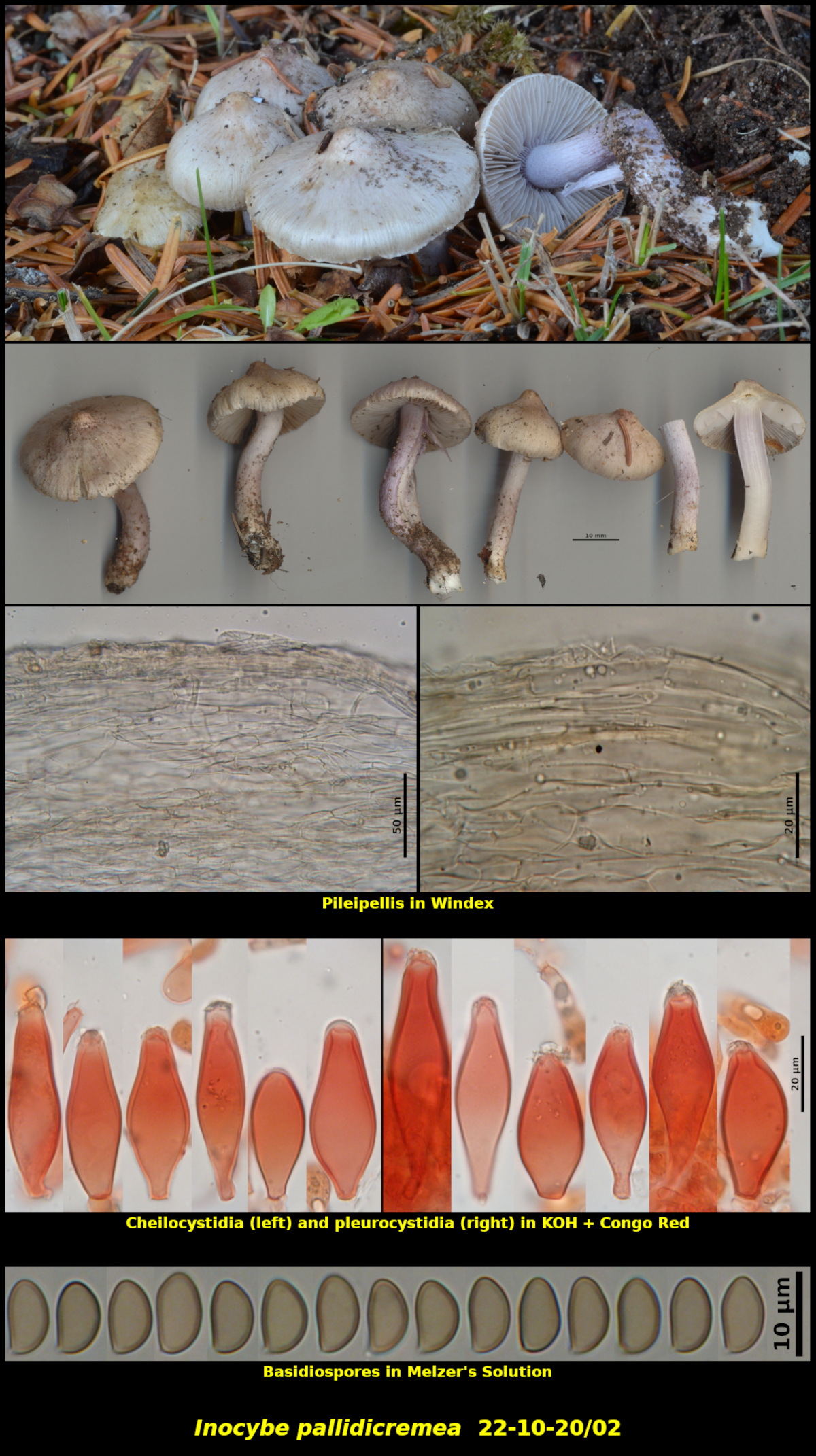Fleshy Fungi of New Brunswick >>
Inocybe lilacina
Inocybe pallidicremea Grund & D.E. Stuntz

Clustered (6) in soil and needle litter, associated with Abies balsamea and Picea rubens, Little Lepreau, New Brunswick (22-10-20/02).
Pileus conical-turbinate at first, expanding to broadly conical, with a prominent sharp umbo, moist, appressed silky-fibrillose, greyish white, slightly yellow (HSV45:05:100) near the margin in some, with a very slight violaceous flush in some, 21-32 mm in diameter. Stipe equal, slightly appressed fibrillose to glabrous, pruinose at the apex, nearly white to very pale violaceous (HSV270:05-15:100), yellow at the base, 36-45 x 4-6 mm. Lamellae white, close, adnexed, not marginate. Cortina only seen in a very young basidioma, white. Flesh concolorous with the surface tissues, with a spermatic odour.
Basidiospores orange brown (HSV25:50:80) in spore print, ovoid, often with a shallow suprahilar depression, smooth, without colour changes in Melzer’s Solution, 8.3-9.8 x 4.6-5.6 μm, Q = 1.52-1.92 average[57]: 8.9 x 5.2 μm, Q = 1.73. Cheilocystidia scattered along the edges of the lamellae, metuloid, ventricose to lageniform, less commonly clavate, moderately thick-walled, with walls up to 2.4 μm thick at the neck, often with apical crystals, 34-55 x 13.3-17.5 μm. Pleurocystidia abundant but scattered, similar to the cheilocystidia, with walls up to 2.7 μm thick at the neck, often with apical crystals, 38-63 x 11.4-19.4 μm. Basidia clavate, 4-spored, with a basal clamp connection. Pileipellis a cutis of narrow smooth hyphae above a subpellis of broader hyphae. Clamp connections present on most septa.
Inocybe pallidicremea is a fairly easily recognized species in a normally difficult genus. It is distiguished by its smooth silky pileus, yellow stipe base and abundant cortina. The lilac colours may be conspicuous on both pileus and stipe or may be almost absent, mostly depending upon age or desiccation, and are absent, at least on the pileus, at maturity. Microscopically it is recognized by its smooth ovoid basidiospores and moderately thick-walled hymenial cystidia. Inocybe sublilacina, known from Colorado and Newfoundland, is said to be macroscopically very similar to I. pallidicremea, differing from it by is slightly broader basidiospores and possibly by its lamellae that may have lilaceous tints at first. Inocybe lilacina, another member of this group of species, has the lilac colours of the pileus persistant at maturity. The entire group has been studied in detail by Matheny and Swenie (Mycologia 110: 618–634. 2018).
Photo: D. Malloch (22-10-20/02).